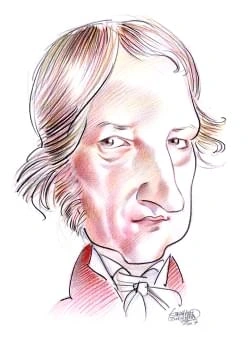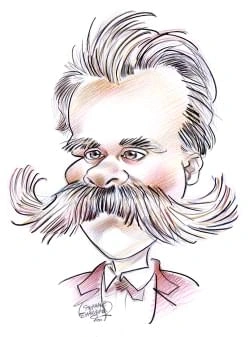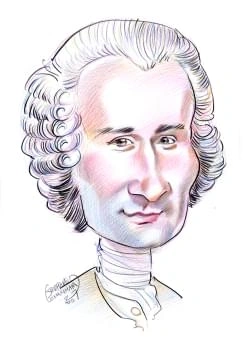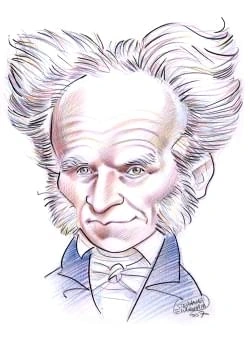193 résultats pour "winter"
-
Le Winter Palace
Le palace jouit d'une situa tion géographique exception nelle, face au site de Louxor, à deux pas des temples de l'an tique cité thébaine, à quel ques minutes de la mythique Vallée des Rois. Depuis les chambres qui donnent sur le Nil, la magie du point de vue laisse émerveillé. Un mélange harmonièux d'influences E ntre orientalisme et style victorien, la décoration du Winter Palace n'est pas un compromis, c'est une alli...
-
Excerpt from The Winter's Tale - anthology.
Of all that hear me, and my near'st of kinCry fie upon my grave! LEONTES. I ne'er heard yetThat any of these holder vices wantedLess impudence to gainsay what they didThan to perform it first. HERMIONE. That's true enough,Though 'tis a saying, sir, not due to me. LEONTES. You will not own it. HERMIONE. More than mistress ofWhich comes to me in name of fault I must notAt all acknowledge. For Polixenes,With whom I am accused, I do confessI loved him as in honour he required:With such a kind of lov...
- Temperate Dry-Winter Climates - geography.
- Mediterranean Winter Rain - geography.
- MAITRE KAMPANUS de Zikmund Winter
-
Christiaan Huygens
par Jacques Winter
Examinateur des Élèves à l'École Polytechnique
La première grande invention de Huygens est l'horloge à pendule.
par Jacques Winter Examinateur des Élèves à l'École Polytechnique
-
Alaska - geography.
depression surrounded by highlands and have the coldest winter and hottest summer temperatures in Alaska. Once the Kuskokwim River passes through theKuskokwim Mountains, it forms the southern edge of a vast lake-studded alluvial plain bounded on the north by the Yukon River. This water-logged lowland is a majorsummer nesting area for birds. Fairbanks is the major city in this region, while Fort Yukon is the major community in the Yukon Flats and Bethel the largest settlementon the Lower Kuskokwi...
-
Alaska - USA History.
depression surrounded by highlands and have the coldest winter and hottest summer temperatures in Alaska. Once the Kuskokwim River passes through theKuskokwim Mountains, it forms the southern edge of a vast lake-studded alluvial plain bounded on the north by the Yukon River. This water-logged lowland is a majorsummer nesting area for birds. Fairbanks is the major city in this region, while Fort Yukon is the major community in the Yukon Flats and Bethel the largest settlementon the Lower Kuskokwi...
-
-
Animal - biology.
Vertebrates are customarily divided into cold-blooded and warm-blooded animals, but these labels are not very precise. Biologists normally use the terms ectoderm and endoderm to describe temperature regulation more accurately. An ectoderm is an animal whose temperature is dictated by its surroundings, while an endoderm is one that keeps its body at a constant warm temperature by generating internal heat. Reptiles, amphibians, and fish are ectoderms. Although they do not maintain a constant wa...
-
Iraq - country.
The Euphrates begins in Turkey, crosses Syria, and enters Iraq at Abū Kam āl. The flow of the Euphrates into Iraq has been greatly reduced by dams built by Turkeyand Syria. The gradient of the Euphrates above the town of H īt, in west central Iraq, is steep. In the 2,640 km (1,640 mi) from its source in Turkey to H īt, the river fallsfrom 3,000 m (10,000 ft) to a low water elevation of 50 m (170 ft) above sea level, an average drop of 1 m per km (6 ft per mi). In Iraq below H īt the fall is very...
-
Missouri - geography.
Saint Francois Mountains, at the eastern end of the crest of the dome. Only in these mountains have the sedimentary rocks been sufficiently eroded away so that theunderlying igneous rocks are exposed. They form the rounded, knoblike peaks of an old mountain range. The peaks project, in isolation or in clusters, between 230 and300 m (750 and 1,000 ft) above the surrounding sedimentary basins. One of these knobs, Taum Sauk Mountain, reaches 540 m (1,772 ft) above sea level and is thehighest point...
-
Missouri - USA History.
Saint Francois Mountains, at the eastern end of the crest of the dome. Only in these mountains have the sedimentary rocks been sufficiently eroded away so that theunderlying igneous rocks are exposed. They form the rounded, knoblike peaks of an old mountain range. The peaks project, in isolation or in clusters, between 230 and300 m (750 and 1,000 ft) above the surrounding sedimentary basins. One of these knobs, Taum Sauk Mountain, reaches 540 m (1,772 ft) above sea level and is thehighest point...
-
Nunavut - Canadian History.
The Arctic Lands is a complex geological area that is centered on the Arctic Ocean. It includes coastal plains, plateaus, and mountains. Coastal plains and plateaus arefound in the western Northwest Territories section of the Arctic Lands, such as on Victoria Island, which is mostly a large, flat plateau. In striking contrast to theserelatively gentle landscapes, the eastern Nunavut section of the Arctic Lands is dominated by a jagged chain of ice-covered mountains. The mountains on EllesmereIsl...
-
Kansas - geography.
at the adjoining cities of Kansas City, Kansas, and Kansas City, Missouri. Its chief headstreams are the Republican and Smoky Hill rivers, which join to form the KansasRiver at Junction City. Each of the headstreams has numerous tributaries. The Kansas River proper is only 270 km (170 mi) long, but the Smoky Hill River has a lengthof 870 km (540 mi), and the Republican River has a length of 720 km (450 mi). The main tributary flowing into the Kansas River is the Big Blue River. The Arkansas Rive...
-
Kansas - USA History.
at the adjoining cities of Kansas City, Kansas, and Kansas City, Missouri. Its chief headstreams are the Republican and Smoky Hill rivers, which join to form the KansasRiver at Junction City. Each of the headstreams has numerous tributaries. The Kansas River proper is only 270 km (170 mi) long, but the Smoky Hill River has a lengthof 870 km (540 mi), and the Republican River has a length of 720 km (450 mi). The main tributary flowing into the Kansas River is the Big Blue River. The Arkansas Rive...
-
Connecticut - geography.
The state’s shoreline, when all the bays and inlets are taken into account, has a total length of 995 km (618 mi). The coastline is deeply indented by long estuaries androcky inlets, and there are many sandy beaches and stretches of tidal marsh. There are several good harbors along the coast, the most important of which is at NewHaven. A few small islands lie offshore in Long Island Sound. D Climate Connecticut has long, hot summers and cold winters. The climate does not vary greatly from place...
-
-
Connecticut - USA History.
The state’s shoreline, when all the bays and inlets are taken into account, has a total length of 995 km (618 mi). The coastline is deeply indented by long estuaries androcky inlets, and there are many sandy beaches and stretches of tidal marsh. There are several good harbors along the coast, the most important of which is at NewHaven. A few small islands lie offshore in Long Island Sound. D Climate Connecticut has long, hot summers and cold winters. The climate does not vary greatly from place...
-
Antarctica - Geography.
The maximum area of sea ice surrounding Antarctica each winter varies from year to year. A marked decline during the 1970s appears to have reversed in more recentdecades, except in the Antarctic Peninsula area. This area has lost almost 40 percent of its sea ice since the start of the 1980s. Sea ice is important to marine life. Krillfeed on algae that live under the sea ice and are released when the ice melts in spring and summer. In turn, many marine animals feed on krill. Emperor penguinsbreed...
-
Japan - geographie.
2.3 Klima Aufgrund der großen Nord-Süd-Ausdehnung und des gebirgigen Charakters des Landes ist das Klima in Japan sehr uneinheitlich. Die jährlichen Durchschnittstemperaturenreichen von 5 °C in Nemuro (Hokkaido) bis 16 °C auf Okinawa. Kurze Sommer und lange, kalte Winter kennzeichnen das Klima auf Hokkaido und im nördlichen Teil vonHonshu. Die strenge Kälte im Winter wird größtenteils durch die aus Sibirien wehenden Nordwestwinde und den kalten Oyashio verursacht, einer aus dem Beringmeerkommen...
-
China - geographie.
sind nährstoffreich und werden landwirtschaftlich genutzt. Das breite Flussdelta des Xi Jiang wird auch Kantondelta genannt. 2.1. 6 Die Tibetische Hochebene Im abgelegenen äußersten Südwesten Chinas liegt die Tibetische Hochebene. Das zerklüftete Bergland gehört zu den höchstgelegenen Plateauregionen der Welt. Diedurchschnittliche Höhe beträgt 4 510 Meter. Die Hochebene wird von Hochgebirgen begrenzt; dies sind im Süden Himalaya, im Westen Pamir und Karakorum und im NordenKunlun Shan und Qilian...
-
New Mexico - geography.
New Mexico’s major river is the Río Grande, originating in southern Colorado, and flowing southward for 760 km (470 mi) through the state. Between the San LuisValley and Española Valley the river flows in a deep canyon known as the Río Grande Gorge; then, below White Rock Canyon, it flows through several valleys containingagricultural land. Most of the water of the Río Grande is used to irrigate these valleys. The Río Grande’s waterflow in New Mexico is extremely low. One of the major tributarie...
-
New Mexico - USA History.
New Mexico’s major river is the Río Grande, originating in southern Colorado, and flowing southward for 760 km (470 mi) through the state. Between the San LuisValley and Española Valley the river flows in a deep canyon known as the Río Grande Gorge; then, below White Rock Canyon, it flows through several valleys containingagricultural land. Most of the water of the Río Grande is used to irrigate these valleys. The Río Grande’s waterflow in New Mexico is extremely low. One of the major tributarie...
-
Turtle.
Turtles use their jaws to cut and handle food. Instead of teeth, a turtle’s upper and lower jaws are covered by horny ridges, similar to a bird’s beak. Meat-eating turtlescommonly have knife-sharp ridges for slicing through their prey. Plant-eating turtles often have ridges with serrated edges that help them cut through tough plants.Turtles use their tongues in swallowing food, but unlike many other reptiles, such as chameleons, they cannot stick out their tongues to capture food. C Limb Structu...
-
Turtle - biology.
Turtles use their jaws to cut and handle food. Instead of teeth, a turtle’s upper and lower jaws are covered by horny ridges, similar to a bird’s beak. Meat-eating turtlescommonly have knife-sharp ridges for slicing through their prey. Plant-eating turtles often have ridges with serrated edges that help them cut through tough plants.Turtles use their tongues in swallowing food, but unlike many other reptiles, such as chameleons, they cannot stick out their tongues to capture food. C Limb Structu...
-
-
Inuit.
VII HOUSING, TRANSPORTATION, AND CLOTHING Inuit homes are of two kinds: walrus or sealskin tents for summer and huts or houses for winter. Winter houses are usually made of stone, with a driftwood orwhalebone frame, chinked and covered with moss or sod. The entrance is a long, narrow passage just high enough to admit a person crawling on hands and knees.During long journeys some Canadian Inuit build igloos, winter houses of snow blocks piled in a dome shape (the term igloo comes from the I...
-
Snake (reptile).
in their heads that conduct sound. They are able to hear low-frequency sounds and to sense vibrations that travel through the ground or water. The majority of snakeshave good eyesight, especially for detecting moving objects, although most burrowing snakes can only distinguish between light and dark. Pit vipers, boas, and pythons have an unusual adaptation for detecting warm-blooded prey and predators. On the heads of these snakes are small pits lined with cellsthat are extremely sensitive to he...
-
Birding - biology.
swallows, and rock doves nest on buildings in cities, towns, and farms. The chimney swift has abandoned hollow trees for chimneys as a nest site in urban areas.Mallards and Canada geese—once exclusively wild, migratory species—now live year-round in the open spaces found in city parks and golf courses. Nearly all purplemartins, a songbird species that once used the abandoned nests of woodpeckers or the natural cavities of cliffs or dead trees, now live primarily in structures specificallyconstru...
-
Utah - geography.
Temperatures decrease from the south to the north in the state. In the mountains the average temperature drops about 0.5°C (about 1°F) for every about 300 m(about 1,000 ft) rise in elevation. Average July temperatures range from less than 16°C (60°F) in the mountains to more than 27°C (80°F) in a few locations insouthern Utah. At Salt Lake City average July temperatures range from a low of 18°C (64°F) to a high of 33°C (92°F). There is a great variation between daytime andnighttime temperatures,...
-
Utah - USA History.
Temperatures decrease from the south to the north in the state. In the mountains the average temperature drops about 0.5°C (about 1°F) for every about 300 m(about 1,000 ft) rise in elevation. Average July temperatures range from less than 16°C (60°F) in the mountains to more than 27°C (80°F) in a few locations insouthern Utah. At Salt Lake City average July temperatures range from a low of 18°C (64°F) to a high of 33°C (92°F). There is a great variation between daytime andnighttime temperatures,...
-
Spanien - geographie.
Das Klima im überwiegenden Teil Spaniens ist demgegenüber subtropisch-mediterran. Aufgrund der großen Entfernung zum thermisch ausgleichenden Meer hat eskontinentalen Charakter. Die Temperaturunterschiede sind im Jahresverlauf vor allem in der Meseta sehr hoch. Madrid hat eine mittlere Julitemperatur von 24 °C, währendder entsprechende Wert im Januar bei nur 5 °C liegt. Einzelne Tage können auch extreme Werte annehmen. So werden hier im Sommer mitunter Tagestemperaturen von40 °C überschritten un...
-
Massachusetts - geography.
mi). Other large artificial lakes include Wachusett Reservoir, East Brimfield Reservoir, and Cobble Mountain Reservoir. Assawompsett Pond, covering about 10 sq km(about 4 sq mi), is the largest natural lake. North Watuppa Pond and Long Pond are other large natural lakes. Lake Chaubunagungamaug, near Webster, is usuallycalled Webster Lake, because the Algonquian name is difficult to pronounce and spell. The full version of the Native American name is said to be the longest place-namein North Amer...
- Start in den winter
-
-
Winter Olympics Medal Standings.
Norway NOR 4 3 3 10 Sweden SWE 4 3 3 10 Switzerland SUI 3 4 3 10 United States of America USA 3 4 2 9 France FRA 2 1 2 5 Canada CAN 2 0 1 3 Austria AUT 1 3 4 8 Finland FIN 1 3 2 6 Belgium BEL 1 1 0 2 Italy ITA 1 0 0 1 Hungary HUN 0 1 0 1 Czechoslovakia TCH 0 1 0 1 Great Britain GBR 0 0 2 2 Source: International Olympic Committee (IOC).. Oslo, 1952.Participant Abbreviation Gold Silver Bronze Total Norway NOR 7 3 6 16 United States of America USA 4 6 1 11 Finland FIN 3 4 2 9 Austria AUT...
-
Idaho - geography.
Idaho-Montana state line in the southern part of the Bitterroot Mountains. Consequently, nearly all the rivers in the state drain toward the Pacific. Most of Idaho lieswithin the drainage basin of the Columbia River system. The Snake River, which is the chief river in southern and central Idaho, follows a crescent-shaped course forabout 790 km (about 490 mi) across southern Idaho. It then swings northward along the Idaho state line and joins the Columbia River in Washington. Major tributariesof...
-
Idaho - USA History.
Idaho-Montana state line in the southern part of the Bitterroot Mountains. Consequently, nearly all the rivers in the state drain toward the Pacific. Most of Idaho lieswithin the drainage basin of the Columbia River system. The Snake River, which is the chief river in southern and central Idaho, follows a crescent-shaped course forabout 790 km (about 490 mi) across southern Idaho. It then swings northward along the Idaho state line and joins the Columbia River in Washington. Major tributariesof...
-
Colorado - geography.
Although the rivers of Colorado are navigable only by small boats, they are important as a source of irrigation water for use in Colorado and adjoining states. However,the water level of the rivers fluctuates seasonally and from year to year. The level is generally low in winter and high in spring and summer, during the runoff of meltedsnow from the mountains. Colorado has no large lakes of natural origin, but there are numerous small lakes in the mountains. The largest bodies of water in Colora...
-
Colorado - USA History.
Although the rivers of Colorado are navigable only by small boats, they are important as a source of irrigation water for use in Colorado and adjoining states. However,the water level of the rivers fluctuates seasonally and from year to year. The level is generally low in winter and high in spring and summer, during the runoff of meltedsnow from the mountains. Colorado has no large lakes of natural origin, but there are numerous small lakes in the mountains. The largest bodies of water in Colora...
-
Weather.
hours, and the snow can be much deeper in places where the wind piles it up in drifts. Extraordinarily deep snows sometimes accumulate on the upwind side ofmountain slopes during severe winter storms or on the downwind shores of large lakes during outbreaks of polar air. VI WIND Wind is the horizontal movement of air. It is named for the direction from which it comes—for example, a north wind comes from the north. In most places near theground, the wind speed averages from 8 to 24 km/h (from 5...
-
War of 1812 - History.
the thorough training they received in handling guns was far ahead of contemporary British standards. As hostilities loomed, Congress authorized a regular army of 35,000 men, but when the United States officially declared war in June 1812, the actual land force was lessthan 10,000 and nearly half of these soldiers were raw recruits. The existing troops were also widely scattered in small garrisons. The government planned tosupplement this regular force with 50,000 volunteers and 100,000 militiam...
-
War of 1812 - U.
the thorough training they received in handling guns was far ahead of contemporary British standards. As hostilities loomed, Congress authorized a regular army of 35,000 men, but when the United States officially declared war in June 1812, the actual land force was lessthan 10,000 and nearly half of these soldiers were raw recruits. The existing troops were also widely scattered in small garrisons. The government planned tosupplement this regular force with 50,000 volunteers and 100,000 militiam...
-
-
Leichtathletik (Männer): Medaillengewinner der Olympischen Sommerspiele.
1896 Thomas Burke, USA 54,2 Herbert Jamison, USA 55,2 Charles Gmelin, GBR 55,6 1900 Maxwell 'Maxey' Long, USA 49,4 William Holland, USA 49,6 Ernst Schutz, DEN - 1904 Harry Hillman, USA 49,2 Frank Waller, USA 49,9 Herman Groman, USA 50,0 1906 Paul Pilgrim USA 53,2 Wyndham Halswelle,GBR 53,8 Nigel Barker, AUS 54,1 1908 Wyndham Halswelle, GBR 150,0 1912 Charles Reidpath, USA 48,2 Hanns Braun, GER 48,3 Edward Lindberg, USA 48,4 1920 Bevil Rudd, RSA 49,6 Guy Butler, GBR 49,9 Nils Engdahl, SWE 50,0 1...
-
Nevada - geography.
The Truckee, Carson, and Walker rivers flow out of the Sierra Nevada, thread their way around several of the desert ranges, and also end in closed basins. The Walkerflows into Walker Lake, the Carson into Lahontan Reservoir. The major part of the Truckee’s flow is now diverted to Lahontan Reservoir, although as required by lawsome of it empties into Pyramid Lake. Because these three streams flow constantly, the lakes into which they empty never dry up. Winnemucca Lake formerly receivedoverflow w...
-
Nevada - USA History.
The Truckee, Carson, and Walker rivers flow out of the Sierra Nevada, thread their way around several of the desert ranges, and also end in closed basins. The Walkerflows into Walker Lake, the Carson into Lahontan Reservoir. The major part of the Truckee’s flow is now diverted to Lahontan Reservoir, although as required by lawsome of it empties into Pyramid Lake. Because these three streams flow constantly, the lakes into which they empty never dry up. Winnemucca Lake formerly receivedoverflow w...
-
Rhode Island - geography.
C (73° F). Along the northern state line, the January mean temperature is about 1° C (about 2° F) colder than in Warwick in January. Along the ocean coast, theJanuary mean temperature is -1° C (30° F). Warm season temperatures are also influenced by the ocean and bay, so temperatures are usually cooler along the coastthan in the interior. The difference tends to be greatest in spring and early summer. Winter temperatures in Rhode Island are usually above -7° C (20° F), buttemperatures colder by...
-
Rhode Island - USA History.
C (73° F). Along the northern state line, the January mean temperature is about 1° C (about 2° F) colder than in Warwick in January. Along the ocean coast, theJanuary mean temperature is -1° C (30° F). Warm season temperatures are also influenced by the ocean and bay, so temperatures are usually cooler along the coastthan in the interior. The difference tends to be greatest in spring and early summer. Winter temperatures in Rhode Island are usually above -7° C (20° F), buttemperatures colder by...
- Subpolar Dry-Winter Climates - geography.
- PAROLES HIVERNALES [Winter Words] Thomas Hardy
-
Bat - biology.
tomb bat has rather small ears. The shapes of bat ears are extremely varied. The wide ears of the Australian false vampire bat meet above the head and are fused.Many bats are able to turn their ears in the direction of faint noises. Bat hearing and its use in echolocation are highly developed. Some bats have large, conspicuous eyes, while others may have small beady eyes. This variation suggests that vision plays different roles in the lives of various species.Despite the familiar expression, 'b...
-
-
Bear - biology.
programs sponsored by zoos or other breeding centers have attempted to breed giant pandas in captivity, although most of these programs have proved unsuccessful.Among the difficulties faced by captive breeders has been the problem of encouraging a female giant panda to mate with a selected male during the two to three daysof the year when she is most fertile, a period known as estrus. B Spectacled Bear Creamy-white rings surrounding the eyes give the spectacled bear its name. Its shaggy coat of...
-
Alabama (state) - geography.
indentations along the coast are measured, the state’s shoreline is 977 km (607 mi) long. It includes the shores of Mobile Bay, an inlet 56 km (35 mi) long at the mouthof the Mobile River. Barrier beaches partly block the entrance to the bay, leaving narrow openings on either side of Dauphin Island. Dauphin and other islands alongAlabama’s coast west of Mobile Bay are separated from the mainland by Mississippi Sound. D Climate Alabama has a humid subtropical climate, with short, relatively mild...
}})








